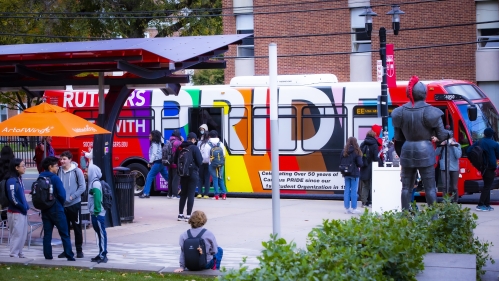
CHIBPS
Substance Use: Marijuana
Accordion Content
-
Marijuana’s main active ingredient is THC. This drug binds to cannabinoid receptors in the brain inducing the subsequent high that is experienced. Generally, the cannabinoid receptors are localized in the pleasure-stimulating, memory, concentration, perception, and coordination-movement parts of the brain. Therefore, users experience pleasure, a distorted sense of reality, problems with concentration and thinking, short term memory loss, increased heart rate, and a loss of coordination. Users may reach a state of increased awareness of sensation as well as a relaxation. Stimulation of the endocannabinoid system also causes increased appetite, known as the "munchies."
When smoking, THC is absorbed into the blood stream where it then travels to the brain. The drug is therefore quick acting, leading to an onset of effects within the first few seconds and the peak within minutes. The overall effects usually wear off within an hour and a half. Paranoia, anxiety, and panic are common side effects in users, especially first-time users. While marijuana is not physically addictive, it is habit forming. People may also build up tolerance over time, but this tolerance generally goes away with a few days or weeks of non-use. Regular users sometimes experience withdrawal symptoms, such as grogginess, irritability, nausea, insomnia, and agitation. These generally wear off in one to two days.
It is nearly impossible to overdose on marijuana as the toxic dose cannot be ingested or smoked in a short enough time period to make it lethal. Some people have attempted to inject THC via syringes, but the lethal dose has never been reached and this is an extremely rare usage of the drug.
-
The ancient Hindus used cannabis for spiritual purposes and actually revered the plant. The name ganja comes from this past use. Various other ancient societies used cannabis for ceremonial and spiritual purposes. In the U.S., cannabis first became popular during the 1920s and 1930s with the emergence of the jazz music scene. It was likewise extremely popular in the 60s with the blues scene and the evolution of a counterculture. Currently, certain cultures still use cannabis as a form of enlightenment, the most famous being the Rastafarian culture. It is also being considered for medical use for the treatment/pain-relief of cancer, glaucoma, migraine, epilepsy, and multiple sclerosis.
-
Cannabis, also known as pot, weed, grass, herb, ganja, skunk, and hash, comes from two species of the cannabis plant, Cannabis Sativa and Cannabis Indica. The first species, mainly used in the production of hash or skunk, has dark green leaves, a "skunky" odor, and purple-ish buds. Cannabis Sativa smells sweet, has light green leaves, and has reddish buds..
Cannabis exists in two forms that are differentiated by the part of the plant that is used in their production. Marijuana consists of the dried leaves and flower heads of the cannabis plant whereas hashish consists of compressed resin extracted from the plant. Generally, hashish is much stronger as it contains up to 26% of the active ingredient, THC. However, hashish may be adulterated with pulp or cloves making its THC content less by weight. Marijuana generally does not exceed 15% THC by weight.
-
Smoking: any type of smoking is dangerous due to the deposition of carcinogenic material in the lungs; cannabis actually contains higher concentrations of carcinogenic material than cigarettes, but people generally smoke cannabis less.
Joint: Marijuana/hashish is rolled into a cigarette with the aid of rolling paper. A blunt, by definition, is marijuana rolled into the emptied wrapper of a cigar.
Bong: cannabis smoke is filtered through a water pipe.
Bubblers: smoke is filtered through water; basically a bong and pipe combined.
Pipe: smoke inhaled through a pipe.
Shotgunning: one person exhales through the joint and into another person’s mouth blowing both the exhaled smoke and the joint’s smoke through the joint and into the other individual (the idea is that no smoke is lost to the surroundings).
Oral Consumption: Involves mixing cannabis with ethanol or lipids. Effects are more delayed in onset than when smoking, but the effects last longer. Typically baked into brownies or cake as “edibles,’ or is infused into drinks.
Vaporization: Cannabis is heated to the point that the active ingredients are essentially vaporized in the air leaving the plant material and many of the toxic ingredients behind.
-
Generally, marijuana does not cause additional negative side effects when mixed with any other drugs. However, the combination of marijuana and tobacco increases the amount of carcinogens inhaled and poses greater potential threat to the lungs over an extended period of time.
-
There exists widespread support the use of medicinal marijuana in the country due to its supposed appetite stimulating and anti-nausea qualities for people with chronic conditions like AIDS. Most cries for legalization are meant for medical rather than recreational purposes. Various LGBTQ advocacy groups around the nation are striving for medicinal legalization through petitioning legislators.
For information about treatment and resources for help with an addiction, please check out our resources page.
For information about treatment and resources for help with an addiction please check out our resources page.